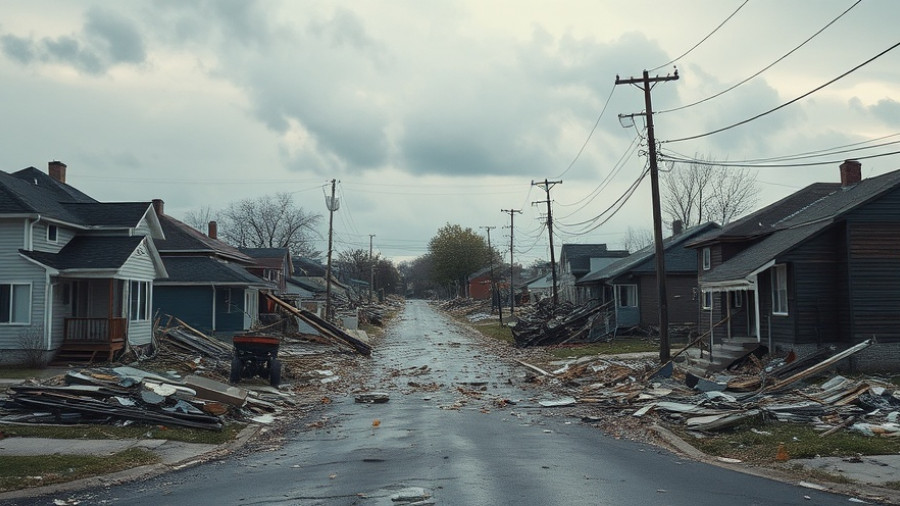
The Alarming History of the Palisades Fire
The Palisades Fire, which devastated portions of Los Angeles in early January 2025, has been etched into California's history as one of the most destructive wildfires ever recorded. The fire began on New Year's Day after a previous blaze, initially called the Lachman Fire, encountered rekindled conditions a week later, fueled by unusually high winds. The tragedy that unfolded led to the loss of 12 lives and more than 23,400 acres burned, along with thousands of structures turned to ash.
The Accused: Who Is Jonathan Rinderknecht?
29-year-old Jonathan Rinderknecht, who lived in the Pacific Palisades area, was arrested in Florida under accusations of intentionally igniting the Lachman Fire. Rinderknecht, a former Uber driver, supposedly set the fire with an open flame, likely a lighter, amidst a climate ripe for disaster. Authorities allege that while he originally reported the fire to authorities, he attempted to cover his tracks, including generating queries on ChatGPT about liability for causing fires.
Unpacking the Investigation
The investigation, led by agencies such as the Bureau of Alcohol, Tobacco, Firearms and Explosives (ATF), spanned over nine months. It culminated in the determination that the Palisades Fire was a holdover from the initial blaze. Kenny Cooper, a special agent in charge, stated that the fire remained smoldering underground while firefighters believed it had been contained. This revelation provokes critical questions about the efficiency of initial containment efforts. Did they genuinely ensure all embers were extinguished, especially given the risk posed by rising winds?
Legal Ramifications and Community Impact
The legal consequences for Rinderknecht could be severe, potentially involving up to 20 years in prison for destruction of property by means of fire. Beyond criminal charges, a flurry of lawsuits has bombarded the Los Angeles Department of Water and Power (LADWP). Many fire survivors claim that the utility failed to provide necessary resources, like sufficient water supply, exacerbating the disaster. This negligence further complicates an already emotional situation—one where grieving communities are struggling for closure while navigating legal proceedings.
Understanding the Recovery Process
For survivors of wildfire tragedies, the recovery process can be algorithmically complicated, akin to navigating an insurance claim process after a car accident or a property damage incident. As the Palisades region begins to heal, residents may face challenges including filing insurance claims, handling denied claims, and negotiating settlements. It’s crucial to be aware of the process to protect one’s rights adequately and maximize compensation.
Claim Negotiation Tips
Given the unique context of the Palisades disaster, even those with property damage claims may find themselves running into roadblocks or red tape hindering the claims timeline. For optimal results when filing a property damage claim, it's vital to collect comprehensive documentation including photos, witness accounts, and any relevant communications with the insurance adjuster. This evidence can build a sound case for your claims negotiation.
Common Misconceptions About Insurance Claims
Many victims believe that all insurance companies operate with the same principles, leading to confusion. However, different insurers may follow varying protocols regarding incident investigations and claims assessments. Understanding your specific insurance policy clauses—and how they define liability and destruction by fire—can offer invaluable insights when addressing the aftermath of such catastrophic events.
Seeking Justice and Closure
While the arrest of Rinderknecht has been hailed as a significant stride towards achieving justice, for many affected communities, the road to recovery and emotional healing presents significant hurdles. The true burden of loss interests not just legal parameters but also human sentiments and community memories that remain irrevocably altered.
As local residents rally for systemic changes to prevent repeat disasters in the future, one thing remains clear: recovery isn’t merely about rebuilding structures but also revitalizing an entire community devastated by profound trauma. Understanding the dynamic of the insurance process in these scenarios will empower individuals in reclaiming their lives.
Call To Action
If you find yourself dealing with the complexities of insurance claims in light of the recent devastating fires—or any property damage—you are encouraged to proactively engage with your insurance providers. Gathering detailed evidence regarding any losses and understanding the claim process can maximize your chances at a satisfactory resolution. The healing process in the face of loss involves not only emotional resilience but also informed action.
 Add Row
Add Row  Add
Add 




Write A Comment